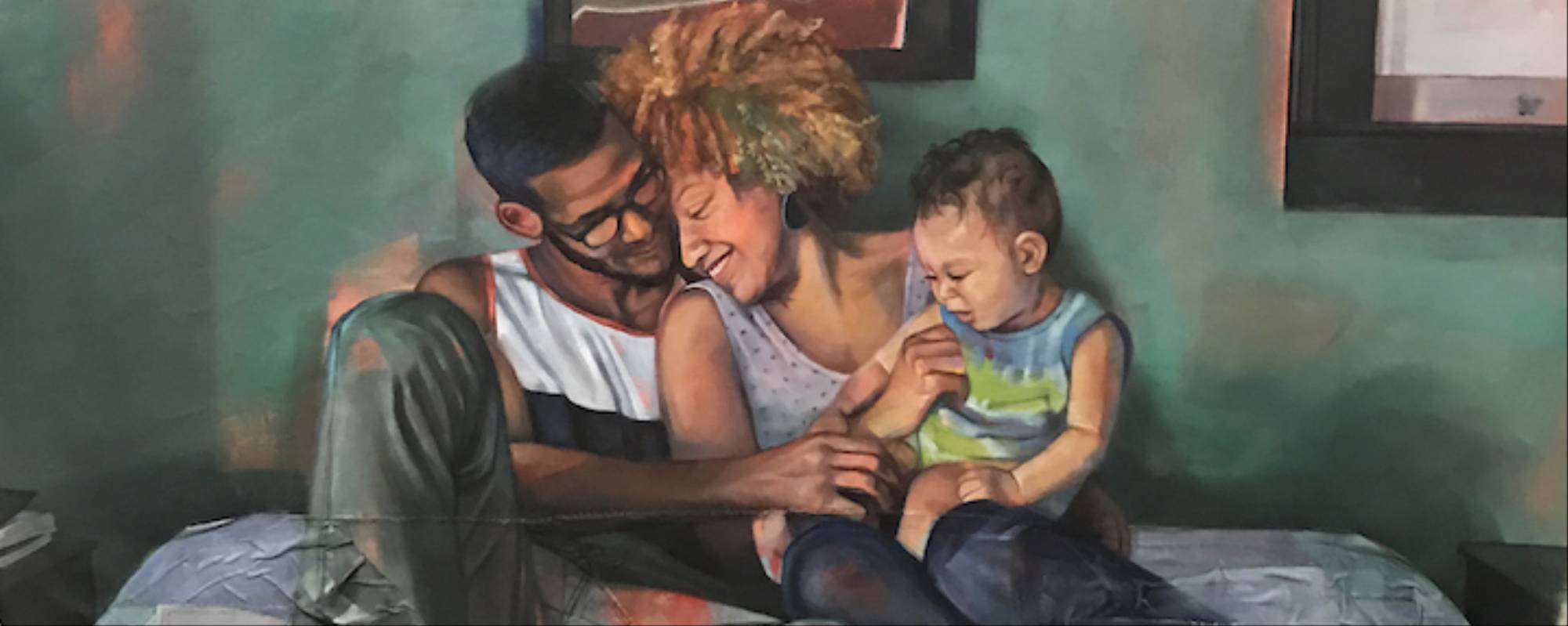The Artist Painting Intimate Portraits of Interracial LovePosted in Articles, Arts, Media Archive, United States on 2017-03-13 18:54Z by Steven |
The Artist Painting Intimate Portraits of Interracial Love
Broadly
2017-03-10
In honor of the 50th anniversary of the landmark Supreme Court case “Loving v. Virginia,” which overturned bans on miscegenation, artist Leslie Barlow wanted to explore mixed-race identity in a positive, uplifting way.
You’d think that 50 years after the landmark Supreme Court case Loving v. Virginia, which determined that anti-miscegenation laws were unconstitutional in the United States, people would be free to love whomever they want. Tell that to Alissa Paris, who was harassed and called a racial slur while walking in downtown Minneapolis with her then-boyfriend a few years ago. They were both mixed race, but most people read Paris as black and her boyfriend as white.
On February 25, Paris attended an art exhibition with her current partner, Jared, who is also mixed race, at the Public Functionary gallery in Minneapolis. There, they saw a portrait of themselves, painted by artist Leslie Barlow, as part of a body of work that features mixed-race families and couples. In no time, Paris started to get choked up; it was rare to see mixed-race people portrayed in such an intentional way. “It was really emotional,” she says…
Read the entire article here.

